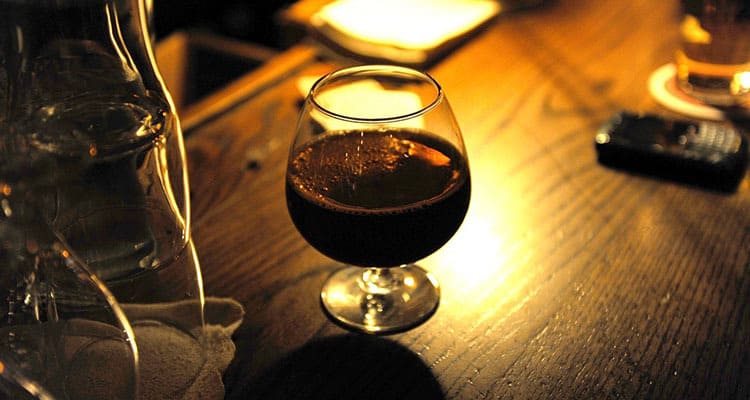
Winter is no time for weak beer. It’s a season for brawny brews that are as warming as a crackling fire, quaffs as strong as they are sustaining. Enter: barley wine. Never mind the name—barley wines contains no actual wine (but they do have a similar ABV, typically topping 10 percent). In fact, the style stems from an old brewing technique called parti-gyle. In Britain during the 18th and 19th centuries, brewers produced several beers from a single grain load. The initial running of wort—the sugary broth that becomes beer—was strongest, with successive cycles growing weaker until all sugars were extracted. It’s like re-using a tea bag to steep a second cup. (Modern brewers typically use fresh ingredients for each beer.)
Initially, the rich beer fermented from first runnings went by various aliases including stock ale, winter warmer, strong ale, and old ale; the 1903 release of Bass No. 1 Barley Wine helped codify the style. In America, the beer first found footing with Anchor Brewing’s 1975 release of Old Foghorn Barleywine Style Ale.
“They directly contrast today’s hop-forward IPAs in that they are almost entirely malt-forward,” says Anchor brewmaster Scott Ungermann of barley wines. “Most of the complex flavors and aromas come from grains and fermentation.”
John Trogner, co-founder of Pennsylvania’s Tröegs Independent Brewing, first sampled barley wine in the early 1990s. “It was rich and viscous and had this incredible mineral content. It was almost salty,” he recalls. “I was like, One of these days, I’m going to figure out how to do this.”
That flight of fancy became Flying Mouflan, a brash blend of citrus, pine, vanilla, and caramel. Eventually Tröegs began aging Mouflan in bourbon barrels, which helped to smooth its rough edges. “This is it. The beer has finally found its place,” Trogner recalls thinking, of what is now Bourbon Barrel Aged Flying Mouflan Barleywine Ale. Like Tröegs, many brewers see barley wine as a canvas for innovation. For example, Rogue Ales spikes its XS Old Crustacean Barleywine with bitterness worthy of an imperial IPA. Midnight Sun Arctic Devil is matured in casks that previously held port, wine, or whiskey, while Wild Heaven Beer conditions Height of Civilization in tequila barrels.
One certainty: No matter which barley wine you select, it is sure to be strong.
Pairing Notes
“Barley wines are so huge they tend to destroy everything they meet,” Trogner cautions. Some cheeses, however, meet the strapping brews head on—seek a robust partner such as extra-aged gouda (the butterscotch sweetness of Uniekass Vintage 5 Year aligns with barley wine’s candy-shop flavor) or a bold blue such as Bay Blue from Point Reyes Farmstead Cheese.
Five To Try
Anchor Brewing Old Foghorn Barley wine Style Ale
This English-inspired barley wine features a hefty charge of floral Cascade hops; fine carbonation knifes through malt richness.
Bell’s Brewery Third Coast Old Ale
Dried cherries dominate this Michigan brewery’s barley wine. Boasting assertive bitterness, the quaff should prove plenty appealing to IPA fans.
Firestone Walker Brewing Company Helldorado Blonde Barley Wine
English and American pale malts lend Helldorado a honeyed hue and flavor, while a stint in oak barrels contributes complementary vanilla and coconut notes.
Midnight Sun Brewing Co. Arctic Devil Barley Wine Ale
Frigid Alaskan winters are no match for the Anchorage brewery’s annual Arctic Devil, a careful mix of barley wine aged in wine, port, and whiskey barrels.
JW Lees Harvest Ale
The British brewery’s yearly barley wine is made with native malts and hops plucked from the first harvest—its flavor calls to mind maple syrup and brown sugar.




